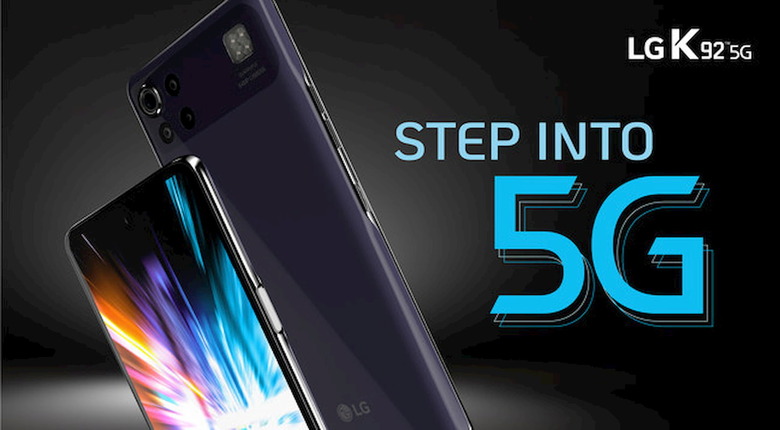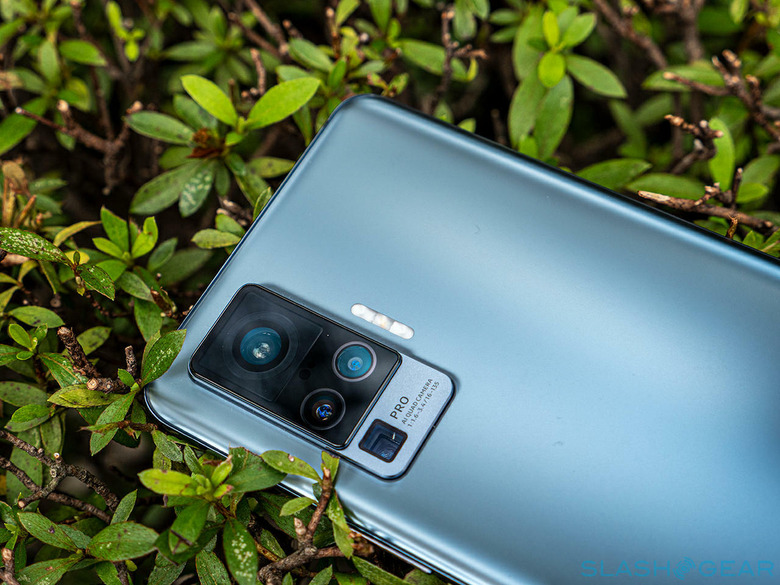Smartphone Trends For 2021: 5G And The Mid-Range March
It's that time of the year again when we look back to the past 12 months and take out our crystal balls to divine the next 12. Of course, we're not fortunetellers or clairvoyants but we do know a thing or two about watching market dynamics, guesstimating future movement, and having some optimism for the future. COVID-19 has clearly shaken up things, including in the mobile industry. As we try to look at what lies ahead, we might even see some of the more lasting ways the coronavirus will affect smartphones in 2021.
5G and its lookalikes
If it weren't for the pandemic, 5G may have been already well-established by this time. Of course, there will always be those who doubt the capability of network operators and device manufacturers to quickly make the next-gen network a staple of modern life. That won't be stopping investors and advocates, though, and we'll see them resume their aggressive push in the next few months. In fact, we've already seen them warming up in the past few weeks.
Thanks to the machinations of major players, we will see 5G spread not just in coverage but also in the number of devices supporting it. 5G support among smartphones will be so common that it will soon no longer make sense to explicitly append "5G" to each phone's name. Granted, those 5G phones will be more expensive but that's the direction phones have been heading to anyway.

Mid-tier Masses
5G adoption will, of course, really depend on how many people are able to actually access it. 5G service will naturally also be more expensive than just 4G LTE but carriers will be working hard to get a return on their investments as quickly as possible. That also means making available 5G phones at accessible prices. Fortunately, it seems that the smartphone market is gearing up to make that happen.
Mid-tier phones have always prioritized quantity over quality but advancements in technologies are tipping the scales in their favor. Both MediaTek and Qualcomm are now racing to conquer the mid-range 5G phone market with more affordable chipsets for phone makers. Quality imaging sensors have also become more accessible to manufacturers even as the technology starts to plateau (more on that later). Finally, the pandemic's effect on the global economy has forced consumers to re-evaluate their smartphone spending, and some major manufacturers like Google, LG, and even Samsung are also setting their eyes on this market tier.
Fragmented Android (again)
Android users might be in for a treat next year as some of Google's long-term investments in the platform finally bear fruit. Specifically, Project Treble and Mainline will make updates roll out faster, or at least they should. Unfortunately, it seems that the UX pendulum is starting to swing in the opposite direction and we might see yet another fragmentation.
After years of trying to work towards a more uniform user experience, phone makers seem to be once again carving their own paths. Samsung is no longer an outlier here as even OnePlus, once regarded a champion of that cause, has begun casting doubt on the point of what most refer to as a "stock" Android experience. While there are some that still try to adhere to Google's flavor, changes in iOS are inspiring some to break away and explore new territory.
Foldables, Rollables, and everything in between
Samsung practically ruled the foldable market in 2020, mostly because it was pretty much the only one in that market. Although it has proven it can quickly improve on the technology, it also showed how problematic and expensive it can be. It will still be betting on that in 2021 but it will see some competition from other unorthodox form factors.
LG is already expected to launch a phone with a rollable screen in 2021 and TCL might not be that far behind. OPPO is actually even more ready to jump in anytime, though it's exercising some caution. Microsoft might try yet another stab at the "dual-screen foldable" disaster that was the Surface Duo. We can also expect companies like Xiaomi, OPPO, and Vivo, among others, to show off some odd design, whether or not they come to the market.
Charging Chaos
Smartphone charging hasn't really been that standard or uniform in the past years or so. The adoption of USB-C and Power Delivery even added to the confusion because manufacturers don't implement the standard correctly or completely. And then we have incompatible fast charging features, both wired and wireless. They may be optional but you'll most likely want to take advantage of them anyway.
When manufacturers start copying Apple and stop shipping chargers in boxes, there might be even more added confusion about which will charger work with which phone at which rate. You can always go for the minimum standard (USB-C PD 2.0, for example), but even then, not all third-party chargers and cables might be doing what they promise to do.
Camera Conundrum
Cameras remain an important feature in smartphones. Even when the pandemic forced many people indoors, new uses have come up that demanded better quality photos and videos. Development on mobile cameras, however, may have plateaued just a bit, with some sensor makers just trying to throw more pixels into the basket. Phone makers have mostly hit a wall when it comes to what they can cram inside a phone and many seem to be investing more heavily in software-based solutions in the meantime.

The front-facing camera, however, is always in need of some out of the box thinking to solve the bezel problem. Unfortunately, we might not see more under-display cameras in 2021, especially with disappointing reviews of the ZTE Axon 20 5G's first try. Given how important selfies and vlogging still are, major OEMs are unlikely to make that jump unless they're absolutely sure of the quality of images such a camera will produce.
Wrap-up
2021 will undoubtedly be an exciting and interesting year for the smartphone industry if only to see how it will recover and adjust to the effects of COVID-19. We could wish for cheaper premium phones, of course, but that ship has long sailed and companies are more likely to just add more mid-range phones to their roster. We will also have to see how consumers react as they slowly try to get back up on their feet, whether they will return to old, sometimes unwise, spending habits or take the hard-earned lessons of 2020 to heart.
